As someone who has spent a significant amount of time exploring the world of big data, I understand that finding the best laptop for big data professionals is crucial to making your work more efficient and enjoyable. From processing massive datasets to running complex data analytics tools, the ideal laptop must possess the power and capabilities to manage these tasks without breaking a sweat. In this guide, I'll help you navigate the sea of options to find the perfect laptop tailored to your big data needs.
To create this guide, I've reviewed an extensive spreadsheet of recent laptop releases, comparing specs and reviews from both professionals and users. Through this process, I've identified the top laptops based on the specific requirements of big data professionals and a range of price points. Among the factors I've considered are processing power, memory capacity, storage solutions, and GPU performance, as these are all critical in handling large datasets, running data-intensive applications, and even visualizing your findings.
As a big data enthusiast, I know that a high-performance laptop can make all the difference in streamlining your workflows and tackling complex data challenges. Whether you're working with Hadoop, Spark, or other big data frameworks, this guide will provide you with the insights needed to make an informed decision on the best laptop for big data tasks. Say goodbye to sluggish performance and hello to a seamless big data experience.
Processing Power: The Backbone of Big Data Laptops
If you're in the market for a laptop to handle Big Data workloads, the right processor can make all the difference. Let's take a look at the latest processor offerings from Intel and AMD and how they stack up for Big Data applications.
What's new in the processor market?
Intel's 13th-generation Core processors have already been released, but their 12th-generation CPUs still provide excellent value, especially for those not needing cutting-edge performance. AMD has also made strides in the laptop CPU market, capturing 20% of the market share with its 6th and 7th-generation Ryzen processors. Apple's ARM-based M1, M2, M2 Pro, and M2 Max system-on-chip modules offer exceptional single-core performance and battery life, but we can ignore them for cross-platform Big Data applications.
How much money do you have for a processor?
Deciding on a budget is a crucial first step. If you're on a tight budget, an i3-1115G4 can handle basic Big Data workloads. Still, if you can afford it, an i5-1135G7 or Ryzen 5/7 would be a nice upgrade. If money is no object, an i7-11370H provides excellent performance for demanding applications.
What are your workloads?
For Hadoop or Spark applications, you don't need a high-end processor. An 8th or 9th-generation Core i5/i7 or Ryzen 5/7 will do the job just fine. However, if you're working with large datasets, machine learning algorithms, or other demanding applications, investing in a faster CPU can significantly reduce processing times.
Is it worth investing in a fast CPU for data science?
It depends on your specific workloads. Suppose you're working with large datasets or machine learning algorithms. In that case, a faster CPU can significantly reduce processing times and improve productivity. On the other hand, if you're working with smaller datasets or less demanding applications, a mid-range CPU will suffice.
Recommended processors by price range
Here are our recommendations for processors based on price range:
| Processor | Price Range | PassMark Score | Cinebench R23 Score |
|---|---|---|---|
| i3-1115G4 | Under $500 | 5126 | 1047 |
| i5-1135G7 | $500-$1000 | 10270 | 2656 |
| Ryzen 5/7 | $500-$1000 | 12500 | 2875 |
| i7-11370H | Over $1000 | 12606 | 3304 |
Remember, when selecting a laptop for Big Data workloads, you'll also want to consider factors such as RAM and storage. A minimum of 16GB of RAM and 500GB of SSD storage is recommended for optimal performance.
Graphics Matter: What to Consider When Choosing a Laptop for Big Data Processing
In recent years, there have been significant changes in the laptop GPU market. Nvidia continues to dominate, with the RTX 30 series cards being the most popular choice for current notebook GPUs. However, the recently released RTX 40 series cards are also hitting the market.
For Big Data jobs, a dedicated GPU is not necessary but can provide a performance boost in certain situations such as training deep learning models or performing fast matrix operations. In terms of ranking GPUs for data science applications, I use 3DMark since it's the most popular option for data scientists. However, for an all-around laptop that can handle both data science and gaming, other benchmarks like 3DMark Advanced or Unigine Heaven/Valley benchmarks can be considered.
When selecting a laptop GPU for Big Data tasks, consider the following factors:
- The budget you have.
- The tasks you will be performing.
- The balance between power and portability.
Here are some recommended GPUs for different price ranges:
| GPU | Price |
|---|---|
| GeForce GTX 1650 | $500 – $800 |
| GeForce RTX 3050 | $800 – $1,200 |
| GeForce RTX 2060 | $1,200 – $1,800 |
Keep in mind that laptop manufacturers determine the exact GPU wattage, so there may be a wide variance in graphics performance, even with laptops having the same GPU chipset.
RAM it up: How much memory do you need?
RAM, or Random Access Memory, plays a crucial role in Big Data applications, which are often memory-hungry by nature. While most mid-range laptops come with 16 GB of RAM and high-end laptops with 32 GB or more, Big Data professionals need to make sure they have enough RAM to handle their workload.
For most Big Data use cases, 16 GB is the bare minimum, while 32 GB is ideal for anything that requires a lot of data analysis. However, if you're working with HPC applications or machine learning models, you should aim for 64 GB or more.
It's worth noting that while some laptops allow RAM upgrades, most come with soldered RAM and cannot be upgraded after purchase. If you think you might need more RAM down the line, make sure to buy a laptop with upgradable RAM and an upgradeable SODIMM slot.
As for DDR5, while it does offer better performance than DDR4, it's still quite expensive and needs time to mature as a technology. If you're looking for a laptop that can handle multiple data science projects at once, consider getting one with DDR5 RAM. However, DDR4 RAM is still perfectly suitable for most Big Data applications.
Other considerations when choosing laptop RAM include ECC (Error-Correcting Code) for data integrity, CL (CAS Latency) for speed, and frequency for overall performance. However, these factors may not be as important as the amount of RAM you have for most Big Data applications.
Here are some recommendations for laptop RAM based on various price levels:
| Price Range | RAM Recommendation |
|---|---|
| Under $500 | 8 GB |
| $500-$1000 | 16 GB |
| $1000 and up | 32 GB or more |
In summary, when choosing the right laptop RAM for Big Data, make sure to consider the amount of RAM needed for your workload, the possibility of upgrading RAM in the future, and whether DDR5 is worth the extra cost. With these factors in mind, you can make an informed decision and choose a laptop that will meet your Big Data needs.
Unraveling the Mysteries of Big Data Laptop Buying
Q: What are the recommended laptop specs for Big Data processing?
When it comes to Big Data processing, you need a laptop with powerful specifications to handle the large datasets and complex calculations involved. The recommended laptop specs for Big Data processing are as follows:
- Memory: For optimal performance, it is recommended to have at least 16 GB of RAM. This will allow your laptop to efficiently handle the data-intensive operations required for Big Data processing.
- Processor: A high-performance processor is essential for Big Data processing. Ideally, you should go for a laptop with an Intel Core i7-11370H processor or better. These processors offer excellent multi-threaded performance, allowing for faster data processing and analysis.
- Graphics: While not as critical as memory and processor, having a dedicated graphics card can enhance your laptop's performance when it comes to visualizing and analyzing Big Data. The recommended graphics card for Big Data processing is the GeForce RTX 2060 or a newer equivalent.
Which laptop is best for handling Big Data?
The best laptop for handling Big Data depends on your specific needs and budget. However, we have compiled a list of laptops that excel in Big Data processing tasks. Here are some top recommendations:
- ASUS Zenbook: Priced at around $640, the ASUS Zenbook offers a good balance of performance and affordability. It features a capable processor, sufficient memory, and a dedicated graphics card, making it suitable for handling Big Data.
- HP Victus 15: With a price tag of approximately $880, the HP Victus 15 is another great option for Big Data processing. It offers a powerful processor, ample memory, and a dedicated graphics card to handle the demanding tasks associated with Big Data.
- Lenovo Legion 5 Pro: Coming in at around $1,350, the Lenovo Legion 5 Pro is a high-performance laptop that can handle even the most challenging Big Data tasks. It boasts a top-of-the-line processor, ample memory, and a powerful graphics card, making it an excellent choice for professionals in the field.
- GIGABYTE AORUS 15 XE4: Priced at approximately $1,600, the GIGABYTE AORUS 15 XE4 offers exceptional performance for Big Data processing. It features a high-performance processor, ample memory, and a dedicated graphics card, making it a reliable choice for data-intensive tasks.
- ASUS ROG Strix Scar: For those looking for ultimate performance, the ASUS ROG Strix Scar is a top-tier laptop priced at around $2,310. It offers a powerful processor, ample memory, and a high-end graphics card, making it perfect for handling Big Data processing with ease.
- Dell XPS 17 9720: If budget is not a concern and you want the absolute best, the Dell XPS 17 9720 is a premium laptop priced at approximately $5,600. It boasts top-of-the-line specifications, including a high-performance processor, ample memory, and a powerful graphics card, making it a top choice for Big Data processing professionals.
Can a laptop handle Big Data analytics?
Yes, laptops can handle Big Data analytics, but it's essential to choose a laptop with suitable specifications to ensure smooth and efficient performance. With the right combination of memory, processor, and graphics, a laptop can handle the processing and analysis of large datasets associated with Big Data.
How much RAM is required for Big Data processing on a laptop?
The amount of RAM required for Big Data processing on a laptop depends on the size and complexity of the datasets you are working with. As a general rule of thumb, it is recommended to have a minimum of 16 GB of RAM for optimal performance. This will allow your laptop to handle the data-intensive operations involved in Big Data processing more effectively.
What processor is best for Big Data processing on a laptop?
When it comes to Big Data processing on a laptop, a high-performance processor is crucial. For optimal performance, it is recommended to choose a laptop with at least an Intel Core i7-11370H processor or a newer equivalent. These processors offer excellent multi-threaded performance, allowing for faster data processing and analysis.
Is SSD storage necessary for working with Big Data on a laptop?
While SSD storage is not strictly necessary for working with Big Data on a laptop, it can greatly enhance the overall performance of your system. SSDs offer faster data access and transfer speeds compared to traditional hard drives, resulting in quicker loading times and improved data processing. Therefore, it is highly recommended to have an SSD in your laptop for a smoother Big Data processing experience.
What are the minimum laptop requirements for Big Data analytics?
The minimum laptop requirements for Big Data analytics are as follows:
- Memory: A minimum
6 Best Laptops for Big Data
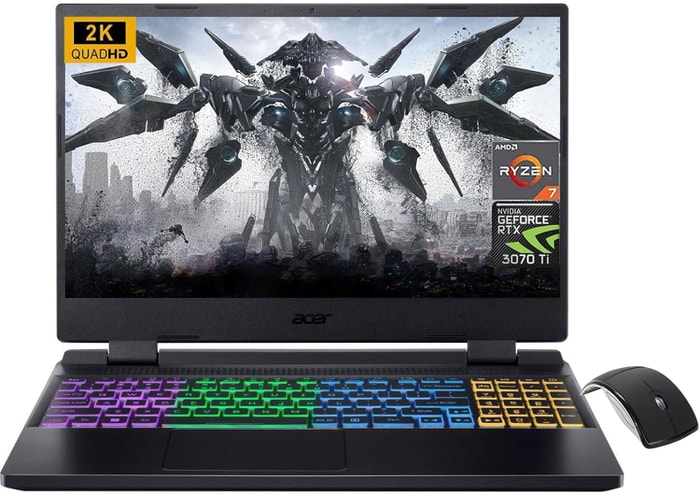 $680
$6801.acer Nitro 5
Big Data laptop- Very good processor (Ryzen 7 6800H)
- Very good graphics card (RTX 3070 Ti)
- One of most affordable laptops with an AMD Ryzen 7 processor
- Spacious 1TB SSD
- Unremarkable memory amount (32GB)
- No IPS Panel (worse contrast)
Alternatives
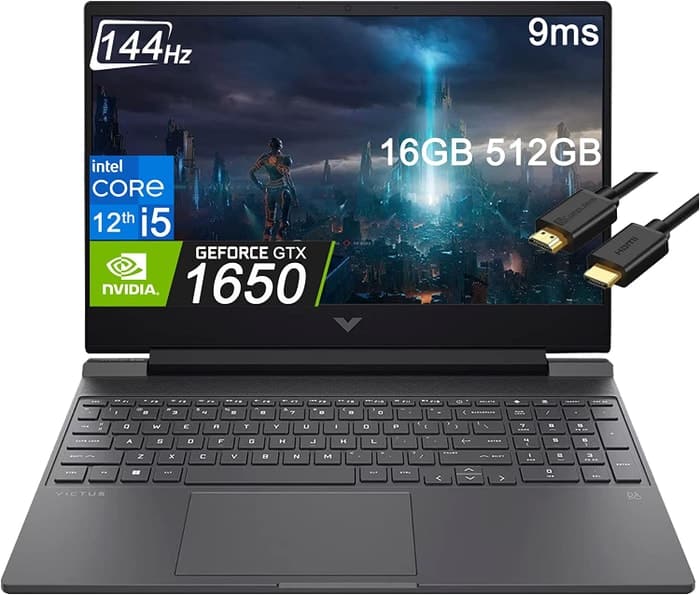
HP Victus 15t
- Solid gaming performance
- Excellent price
- Bad battery life
- Rather plain design

2.ASUS TUF Dash F15
ASUS TUF Dash F15: A powerful and competitively priced laptop for Big Data applications.- Lightweight and well built
- Good FHD 300Hz and QHD screen options
- Significantly more powerful than the previous generation
- Competitive pricing
- Quirks affecting everyday ergonomics
- Ports squeezed together on the left edge
- Caution advised with the FHD 144Hz panel option
Summary
The ASUS TUF Dash F15 is a well-built and lightweight laptop that offers good performance for Big Data applications. It has a variety of screen options to choose from and is significantly more powerful than the previous generation. However, some quirks affecting everyday ergonomics should be noted, and the FHD 144Hz panel option should be approached with caution.
Reviews
Alternatives
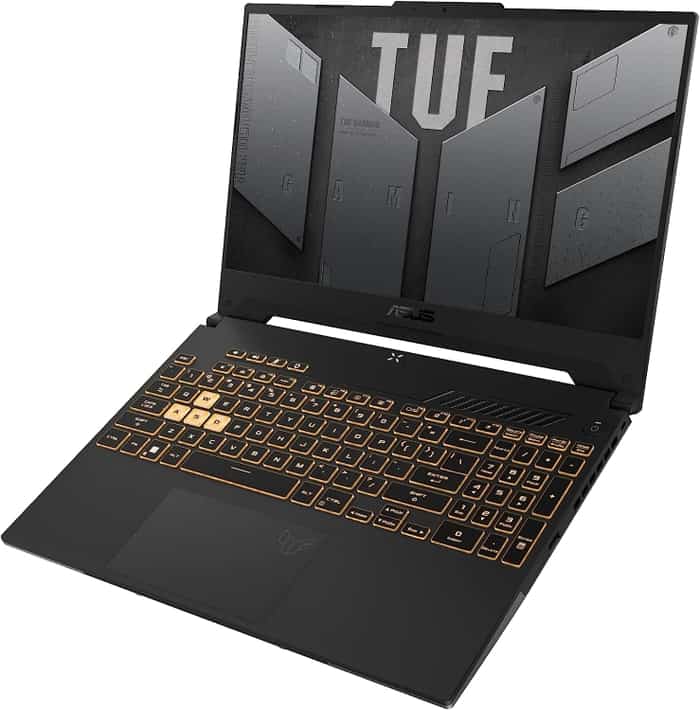
ASUS TUF F15 FX507VU-ES53
- Superb 1080p gaming
- Strong productivity capabilities
- Poor webcam, touchpad, and speakers
- Some games appear washed out on display

3.Lenovo Legion 5i Pro 16
Lenovo Legion 5i Pro: A Powerful Big Data Laptop with Sleek Design and Plenty of Ports.- Stylish, sleek form factor
- Gorgeous display
- Strong performance
- Quiet fans
- Webcam quality is poor
- No biometrics
- SSD is slightly slower than the competition
Summary
The Lenovo Legion 5i Pro is a stylish and powerful gaming laptop that also serves as a great option for big data tasks. With its sleek form factor, gorgeous display, strong performance, and plenty of ports, it offers decent value for money.
Reviews
Alternatives
 $1,430
$1,430MSI Cyborg 15
- Able to play at the highest 1080p settings
- Peppy processor for the money
- Display is dim and disappointing
- Sharp chassis edge can dig into wrists during typing
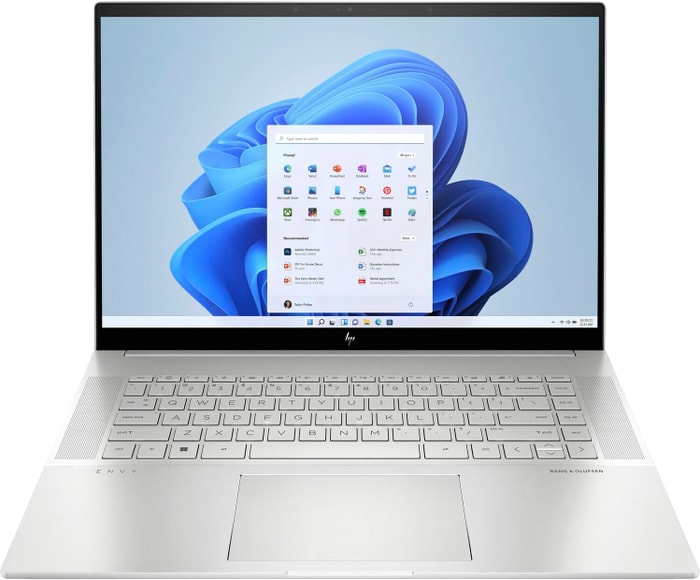 $1,800
$1,8004.HP Envy 16
The HP Envy 16 offers high-end features and powerful performance, making it a tempting choice for creative applications and light gaming.- Plenty of CPU and GPU power
- New 120Hz screen refresh rate
- High-res webcam
- Sleek design
- Merely adequate base screen
- Optional OLED has fewer pixels than before
- Bulky and heavy
Summary
The HP Envy 16 is a desktop replacement laptop that comes with high-end features like a world-class webcam and a 120Hz refresh display. It offers plenty of CPU and GPU power, making it suitable for creative apps and light gaming. However, it has a bulky and heavy design, and the base screen is merely adequate.
Reviews
Alternatives

ASUS ROG Strix G15
- High-performance CPU and GPU
- Good workmanship and design
- Skimpy connectivity
- Potential coil whine in certain situations

5.Lenovo Legion Pro 7i 16
Lenovo Legion Pro 7i 16: Impressive performance and value in a sleek design.- Strong overall performance
- Big, bright, and fast display
- Per-key RGB lighting
- Some flex to keyboard deck
- Poor battery life
Alternatives
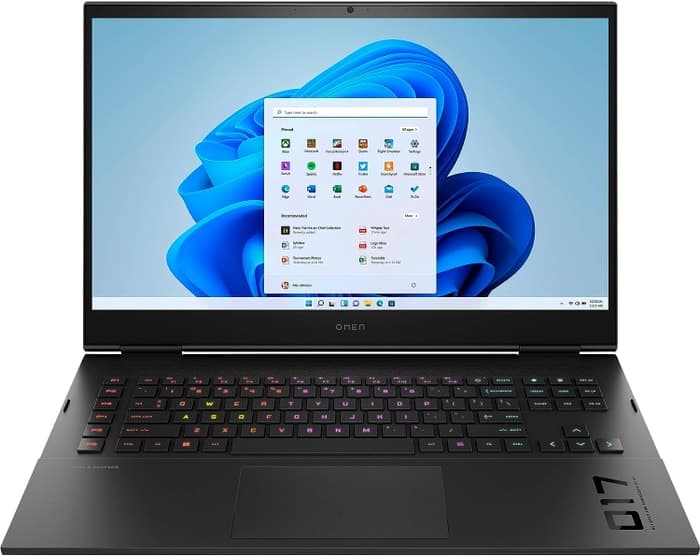
HP Omen
- Slim and portable design for a 16-inch laptop
- Reasonable price for midrange gaming performance
- All-AMD configuration is outperformed by Intel and Nvidia competitors
- Unimpressive 144Hz refresh rate and full HD resolution

6.HP Omen 17
The HP Omen 17 is a high-end gaming laptop that excels in video processing, rendering, and QHD gaming, but falls short in terms of performance for its RTX 4080 and battery life.- QHD display with 165 Hz
- Expandable working memory
- Thunderbolt 4 with Power Delivery
- Individual key illumination
- Slightly
Summary
The HP Omen 17 is a powerful laptop with a Core i9-13900HX and GeForce RTX 4090, making it suitable for video processing, rendering, and QHD gaming. It offers a QHD display with 165 Hz, expandable working memory, and Thunderbolt 4 with Power Delivery. However, it has slightly below-average performance for its RTX 4080, a high noise level, a clattery case, and meager battery life.
Reviews
Alternatives
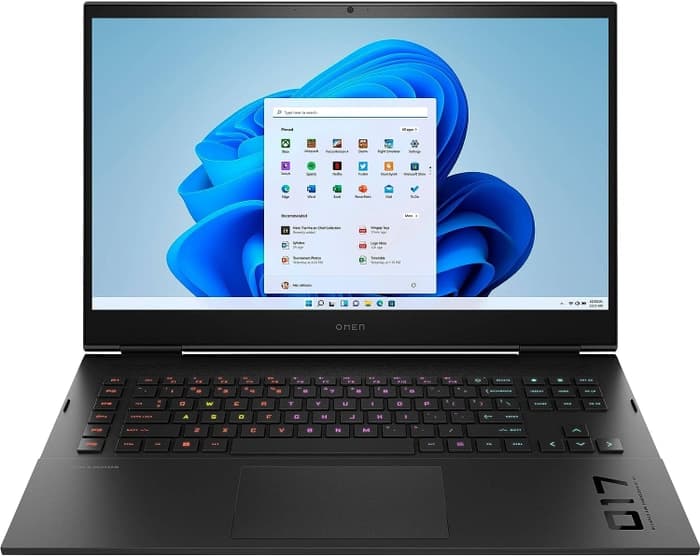
HP Omen
- QHD display with 165 Hz
- Expandable working memory
- Slightly below-average performance for a RTX 4080
- High noise level
Table of the Best Laptops for Big Data
| Laptop | Price (approx) |
| acer Nitro 5 | $680 |
| ASUS TUF Dash F15 | $1,160 |
| Lenovo Legion 5i Pro 16 | $1,300 |
| HP Envy 16 | $1,800 |
| Lenovo Legion Pro 7i 16 | $3,390 |
| HP Omen 17 | $4,290 |





